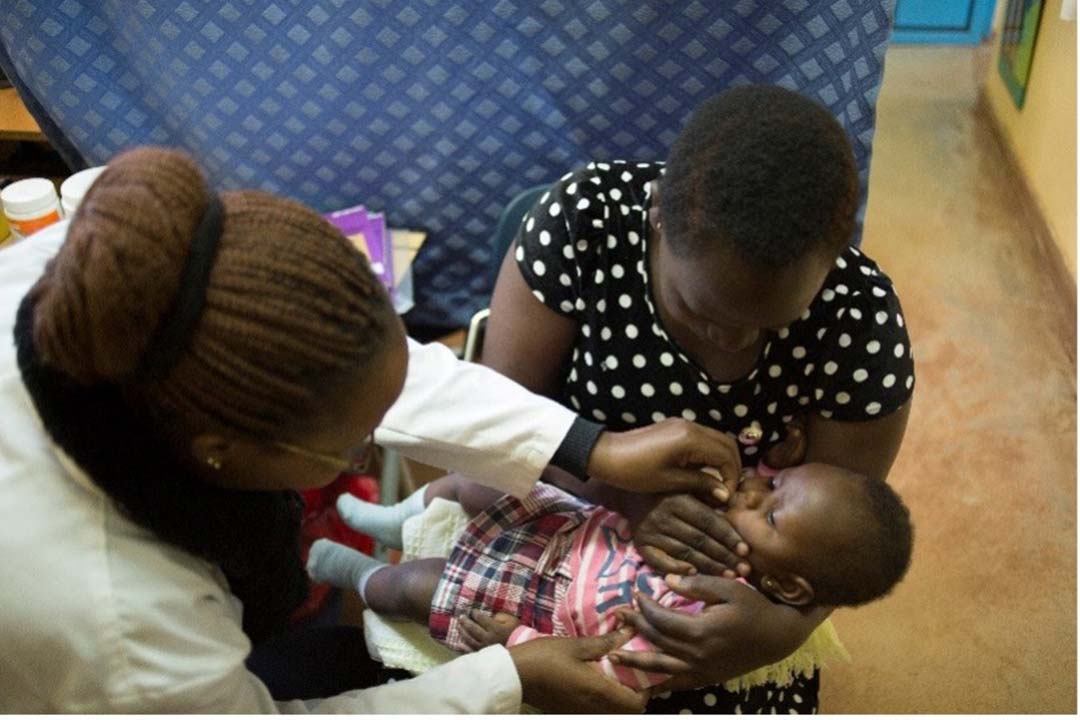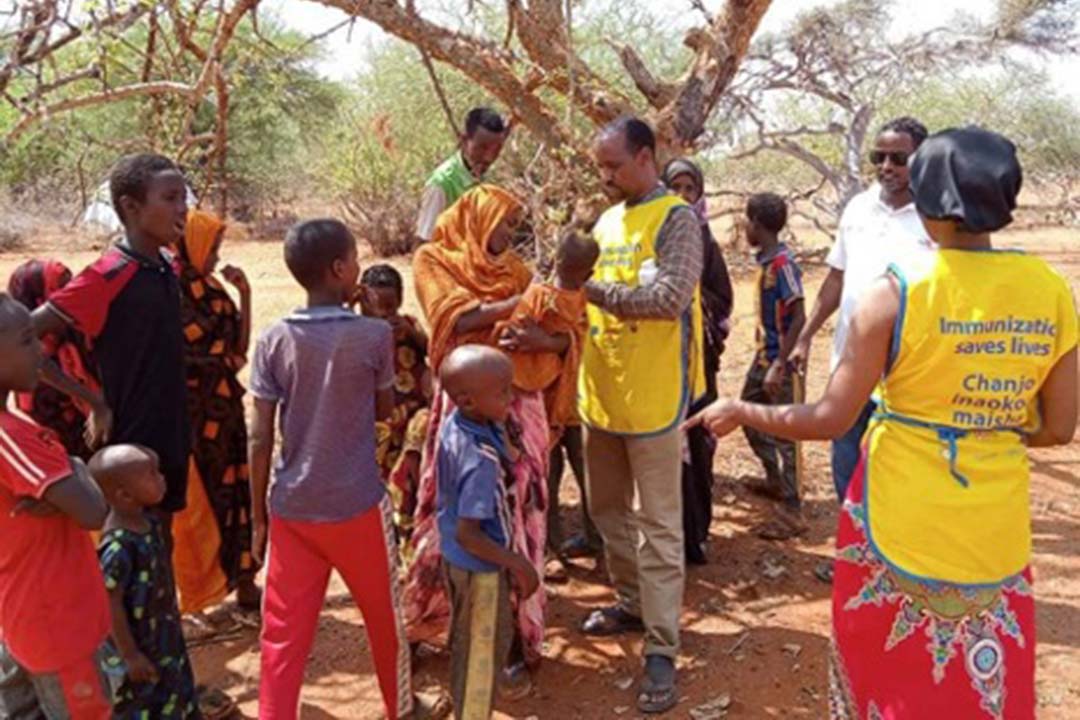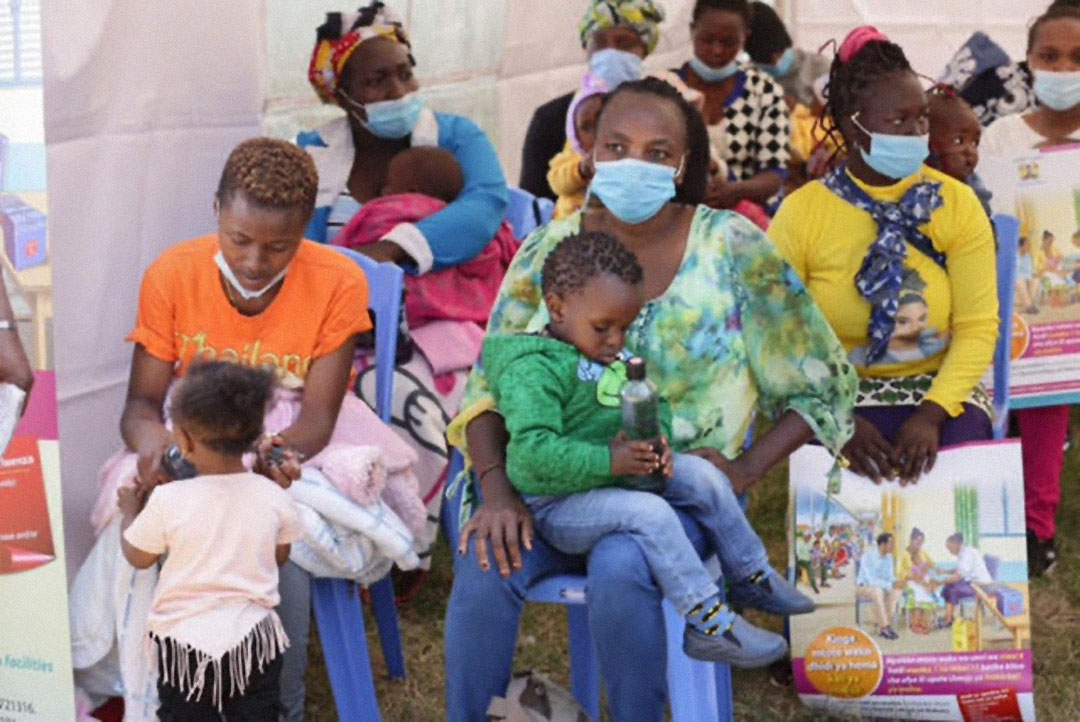How Kenya is innovating to help every eligible child get to four malaria vaccine doses
To reach its full life-saving potential, the RTS,S malaria vaccine demands a four-dose regimen. As Cyrus Michino found in Kenya’s Vihiga County, keeping families committed for such a long course is unique challenge for the health system.
- 18 August 2023
- 5 min read
- by Cyrus Michino
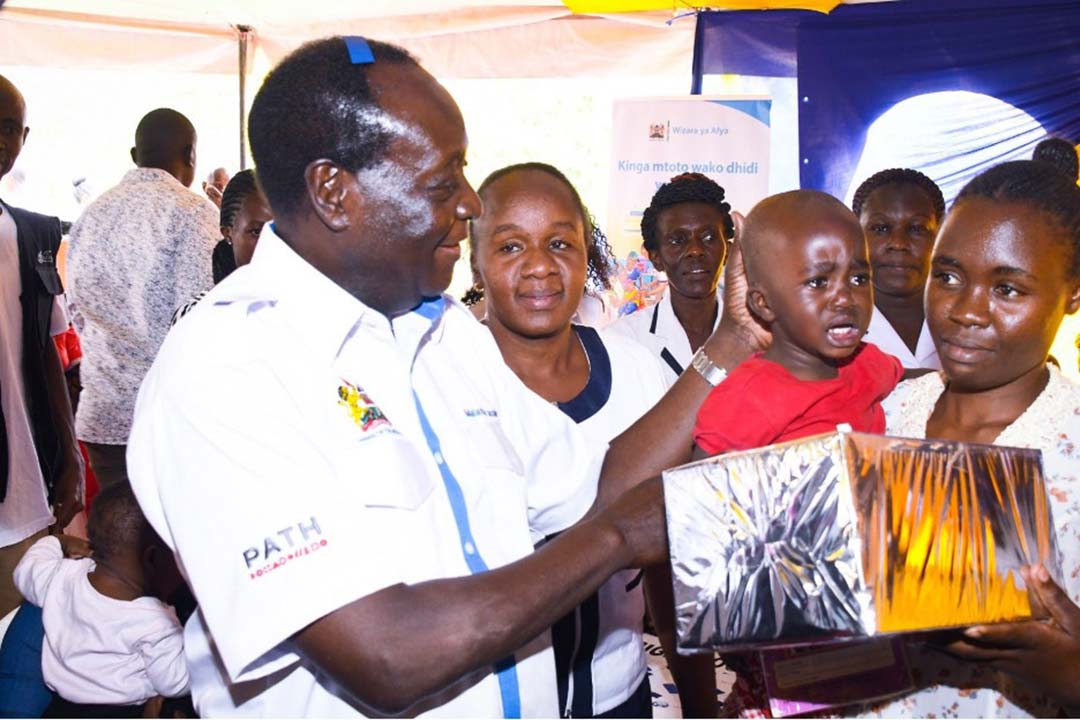
"Today is my daughter's fourth dose. A telephone message from my local hospital reminded me about today's schedule. Otherwise, I would have forgotten," admitted Mary Shianda, pausing to speak to VaccinesWork as she queued for her child's final RTS,S malaria jab at Kimogoi Dispensary in Kenya's Vihiga County.
As of mid-2023, 96.5% of eligible children in Vihiga have received at least one dose of the RTS,S vaccine, the world's first effective immunisation against the parasitic infection that still kills more than 600,000 people each year.
More than 30% of eligible children in Vihiga County are yet to complete the four-dose regimen that maximises the revolutionary vaccine’s effectiveness.
Part of the so-called "Lake-endemic region" in Kenya, a particularly mosquito-plagued set of districts abutting Lake Victoria, Vihiga has been rolling out the vaccine since 2019, when Kenya introduced RTS,S in a number of these highly vulnerable counties.
But even though Vihiga is on the vanguard of the global malaria vaccine roll-out – which is due to hit nine new African countries early next year – more than 30% of eligible children here are yet to complete the four-dose regimen that maximises the revolutionary vaccine's effectiveness.
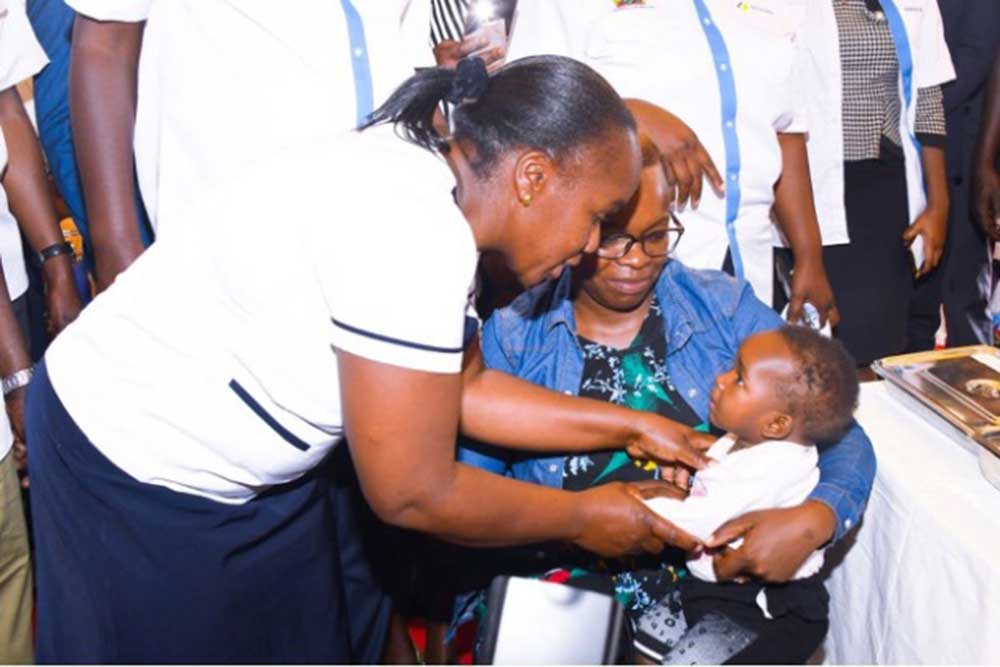
Credit: Isaac, Nation Media Group (NMG).
"As observed, once mothers have given their children the first two or three doses, they tend to disregard the last dose," said Dr Patrick Amoth, the Kenyan Health Ministry's Acting Director General of Health at a vaccine launch event – which marked the expansion of the vaccination programme to more sub-counties – in Vihiga earlier this year. "An immune system with partial vaccination is more likely to fall victim to the plasmodium parasite, compared to fully-vaccinated bodies. Therefore, we urge all mothers to bring their kids until the last jab."
Four doses is an unusually lengthy regime – most childhood vaccines require fewer. The standard protective schedule for the measles-rubella vaccine, for instance, is two doses. The five-in-one pentavalent shot, which protects against diphtheria, tetanus, pertussis, haemophilus influenza type b, and hepatitis B, demands three shots.
But dropping out of the four-dose malaria vaccine schedule early can be costly. "In a past RTS,S test, vaccine efficacy against clinical malaria was 28.3% over four years of follow-up for children who had received only three doses, and 36.3% for kids who had received all the four doses," explained CDC Kenya director Amy Herman-Roloff.
Have you read?
This vaccine, as those statistics underscore, is no silver bullet: even the full four doses do not guarantee perfect immunity. But particularly when used in concert with other preventive tools, like bed-nets and seasonal chemoprevention, RTS,S offers children in malaria-endemic regions an unprecedented shot at safety. It's a chance that Vihiga health workers have no intention of wasting.
"Vihiga County is part of the Lake-endemic region, where malaria cases are the highest. Governor Wilber Otichilo launched the vaccination exercise of March 2023 to stop further child hospitalisations and deaths. To make this dream a success, we have to ensure all eligible children receive all four doses and that RTS,S becomes part of routine immunisation," said Health Promotion Officer Evelyn Mwango in Majengo town.
The positive impact of the vaccine is already being felt. More than a million Gavi-supported RTS,S doses have been administered to some 400,000 children across the Lake-endemic counties and Dr Abdourahmane Diallo, WHO Kenya Representative, confirms that those jabs, in concert with other malaria-control measures, have led to a demonstrable decline in cases. CDC Kenya's Amy Herman-Roloff quantifies that decline at 50%.
But healthcare providers in Vihiga also say that low patient-level vaccine knowledge as well as imperfect communication and record-keeping mechanisms – a centralised system was absent until digital medical registration was introduced in 2021 – have hampered their ability to get every child to that fourth and final dose. "As a solution, we send telephone messages to parents a few days before the vaccination date as a reminder," said Mwango.
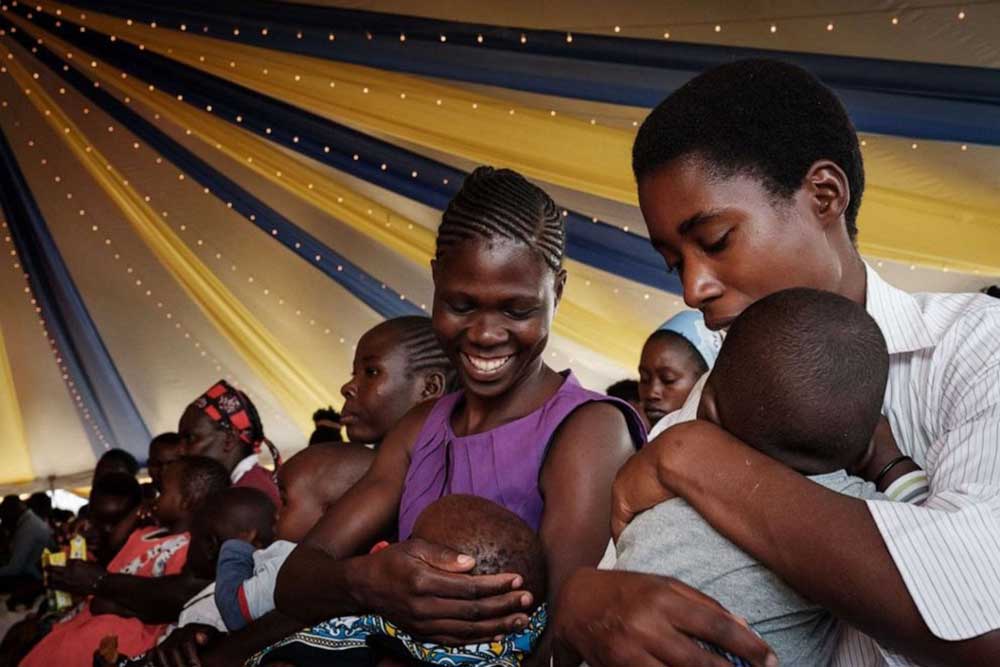
Credit: Nation Media Group (NMG).
"In a bid to kill two birds with one stone, we're supplying treated USAID-sponsored mosquito nets in strategic regions in Vihiga while armed with the RTS,S vaccines. While dispensing the nets, we're reaching children who are yet to receive the fourth dose," said Judy Lugala, a health volunteer in Luanda sub-county.
“We’ve witnessed an increased number of mothers coming out to bring their children for the fourth dose. This trend follows the ongoing campaigns and constant mobile phone reminders implemented by Governor Otichilo in collaboration with the National Malaria Control Programme.”
– Charity Akonyi, nurse
Vihiga County has also released on-the-ground campaigns to create awareness of the importance of getting to the fourth dose, which have included roving campaign trucks, operated in partnership with the Kenya Malaria Youth Army (KMYA), that blast announcements about the immunisation schedules. "Further, we've offered transportation to mobile service providers to reach overdue children living in remote areas," said Vihiga County Health Minister Dr Nicholas Kadaga Mwandihi.
The message appears to be trickling through. "Lately we've been receiving news about the importance of giving our children the booster malaria vaccine jab. Youths are rallying in mobile trucks encouraging us to get the last dose since we live in areas prone to malaria. I'm happy to see my daughter receive her fourth dose," said Mercy Omongo, a parent in Chavakali.
"We've witnessed an increased number of mothers coming out to bring their children for the fourth dose. This trend follows the ongoing campaigns and constant mobile phone reminders implemented by Governor Otichilo in collaboration with the National Malaria Control Programme," said Charity Akonyi, a nurse, in Vihiga's Luanda town.
Kenya does not plan to relinquish the fight against malaria any time soon. In a recent malaria vaccination launch in Nairobi, Dr Lucy Mecca, Head of the National Vaccines and Immunisation Program (NVIP), said: "We will make it our mission to expand malaria vaccination to other parts of the country as more supplies become available. We will expand the availability of the vaccine beyond 2023 by applying for more support from Gavi, The Vaccine Alliance. The goal is to make Kenya malaria-free."
